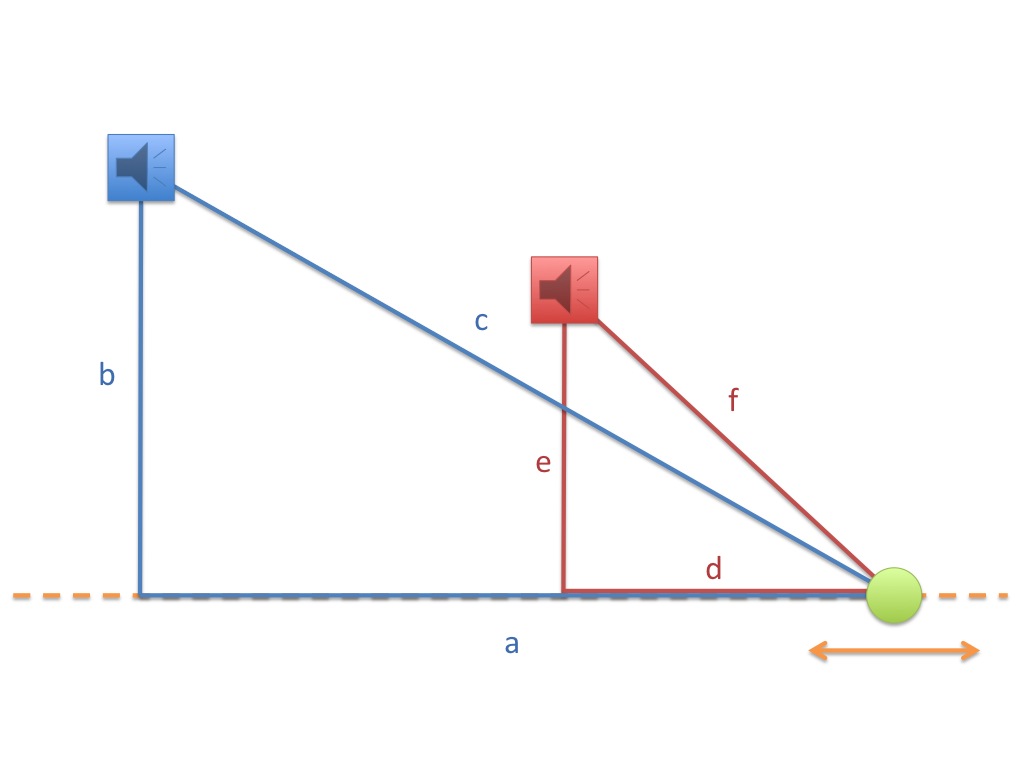Hi everybody,
I could use some help with the following situation.
Two physically displaced speakers need to arrive on time, in order to achieve summation, for a given position (green dot) within a listening plane (orange dashed line).
To compensate for the difference in path length ergo time (speed of sound) electronic delay is added to the closest speaker.
But when the temperature changes, so does the speed of sound and the same amount of electronic delay won't be suitable anymore.
What I'm trying to calculate is the new position WITHIN the constraint of the listening plane (constant height of both speakers, listening plane and position) AFTER temperature change with the INITIAL AMOUNT of electronic delay.
By observation I know that the point moves to the left when temperature drops and to the right when temperature rises.
At the original position there will be misalignment and as a result comb filtering and the new synchronized position has moved.
AFAICT there's only one solution within the constraint of the listening plane where the time-of-flight to the farthest speaker equals the time-of-flight to the nearest speaker PLUS electronic delay AFTER temperature change.
Your help is sincerely appreciated!
